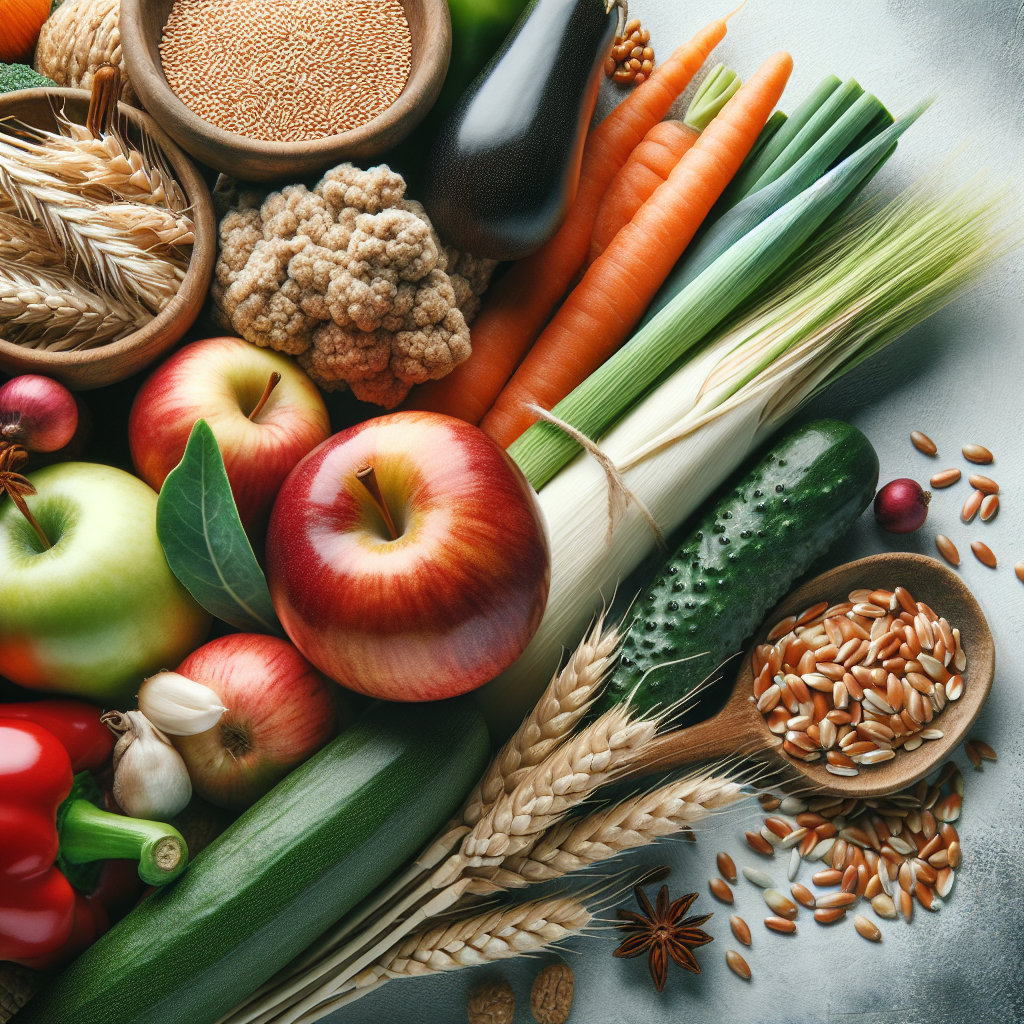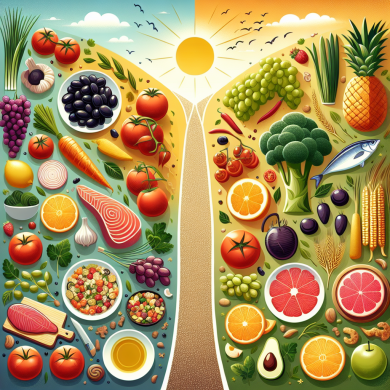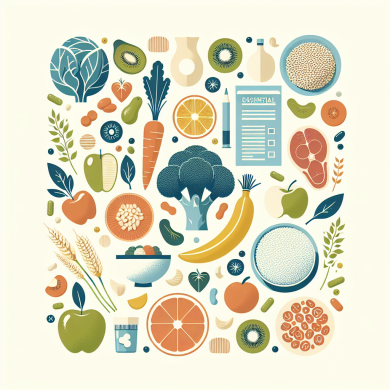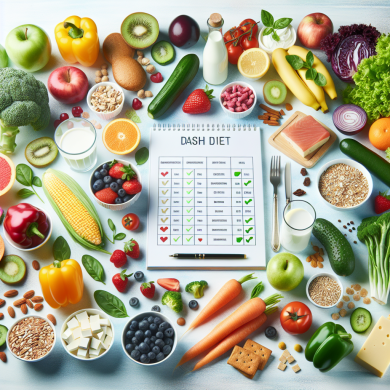Boost Fiber in Your DASH Diet Easily
“`html
Introduction to the DASH Diet
The Dietary Approaches to Stop Hypertension (DASH) diet is a well-researched eating plan designed to help reduce blood pressure and improve heart health. It emphasizes the consumption of fruits, vegetables, whole grains, lean proteins, and low-fat dairy. By focusing on these nutrient-rich foods, the DASH diet provides a host of health benefits, including reducing the risk of heart disease, diabetes, and certain types of cancer.
An essential component of this diet is fiber, a type of carbohydrate that the body cannot digest. Fiber is crucial for maintaining good digestive health, stabilizing blood sugar levels, and lowering cholesterol. However, many people struggle to consume enough fiber daily. This article will explore how you can easily boost fiber in your DASH diet to maximize its health benefits.
Understanding the Importance of Fiber
Before diving into tips for increasing fiber intake, it’s important to understand why fiber is beneficial. There are two main types of fiber: soluble and insoluble. Soluble fiber dissolves in water to form a gel-like substance, helping to lower blood cholesterol and glucose levels. It can be found in foods like oats, peas, beans, apples, citrus fruits, carrots, and barley. Insoluble fiber, on the other hand, helps to move food through the digestive system, promoting regularity and preventing constipation. It is present in whole-wheat flour, wheat bran, nuts, beans, and vegetables like cauliflower, green beans, and potatoes.
Fiber is vital for maintaining a healthy weight, as it adds bulk to the diet and promotes a feeling of fullness. This can help prevent overeating and support weight management. Additionally, a high-fiber diet is associated with a lower risk of developing chronic diseases such as heart disease, type 2 diabetes, and certain types of cancer, particularly colorectal cancer.
How Much Fiber Do You Need?
The recommended daily fiber intake varies based on age and gender. According to the Institute of Medicine, the general guidelines are as follows:
– Men aged 50 or younger: 38 grams per day
– Men aged 51 or older: 30 grams per day
– Women aged 50 or younger: 25 grams per day
– Women aged 51 or older: 21 grams per day
Most people fall short of these recommendations, consuming an average of only 15 grams of fiber per day. Fortunately, with some planning and the right strategies, you can easily increase your fiber intake while following the principles of the DASH diet.
Tips to Boost Fiber in Your DASH Diet
1. Start Your Day with High-Fiber Breakfast Options
Breakfast is the perfect opportunity to kick-start your daily fiber intake. Choose whole-grain cereals, like bran flakes or oatmeal, which can provide 4-10 grams of fiber per serving. Add fresh or dried fruits, such as berries or raisins, and nuts for added flavor and fiber.
2. Incorporate More Whole Grains
Whole grains are a significant source of fiber and should replace refined grains in your diet. Opt for brown rice, quinoa, barley, and whole-wheat bread or pasta. When shopping, look for products labeled “100% whole grain” or “whole wheat” to ensure you’re getting the maximum fiber content.
3. Snack on Fruits and Vegetables
Snacking on fruits and vegetables is an easy way to increase fiber intake. Keep a bowl of fresh fruit visible and within reach to encourage healthy snacking. Raw vegetables like carrots, celery, and bell peppers make for crunchy, fiber-rich snacks that can be paired with hummus or a light dip.
4. Add Legumes to Your Meals
Beans, lentils, and chickpeas are excellent sources of fiber and can be easily incorporated into various dishes. Add them to soups, salads, or casseroles, or use them as a base for vegetarian meals. A half-cup serving of cooked beans can provide 6-8 grams of fiber.
5. Include Nuts and Seeds
Nuts and seeds are not only high in fiber but also provide healthy fats and protein. Sprinkle chia seeds, flaxseeds, or sunflower seeds on yogurt, salads, or smoothies. A small handful of almonds or walnuts can be a satisfying, fiber-rich snack.
6. Choose Fiber-Rich Snacks
When selecting packaged snacks, opt for those that are high in fiber. Look for whole-grain crackers, popcorn, or granola bars with at least 3 grams of fiber per serving. Be mindful of the added sugars and fats in these snacks and choose options with minimal additives.
7. Gradually Increase Fiber Intake
As you work to increase your fiber intake, it’s important to do so gradually. A sudden increase in fiber can lead to digestive discomfort, such as bloating or gas. Increase your fiber intake by a few grams per day to allow your digestive system to adjust. Also, ensure you’re drinking plenty of water, as fiber works best when it absorbs fluid.
Sample High-Fiber DASH Diet Meal Plan
To illustrate how easy it is to boost fiber in your DASH diet, here’s a sample meal plan:
– **Breakfast:** Oatmeal topped with sliced bananas and almonds. Serve with a side of low-fat yogurt.
– **Snack:** An apple with a handful of walnuts.
– **Lunch:** Quinoa salad with mixed greens, cherry tomatoes, cucumber, chickpeas, and a lemon-tahini dressing.
– **Snack:** Carrot sticks and hummus.
– **Dinner:** Grilled salmon with a side of brown rice and steamed broccoli.
– **Dessert:** Mixed berry parfait with chia seeds and a dollop of Greek yogurt.
Conclusion
Boosting fiber intake in your DASH diet is a simple yet impactful way to enhance your overall health. By incorporating more whole grains, fruits, vegetables, legumes, nuts, and seeds into your meals, you’ll reap the many benefits of a high-fiber diet, including improved digestion, better weight management, and a reduced risk of chronic diseases. Remember to make these changes gradually and enjoy the diverse flavors and textures that fiber-rich foods bring to your plate. Embracing these strategies will not only align with the DASH diet principles but will also contribute to a healthier, more balanced lifestyle.
“`















Add comment